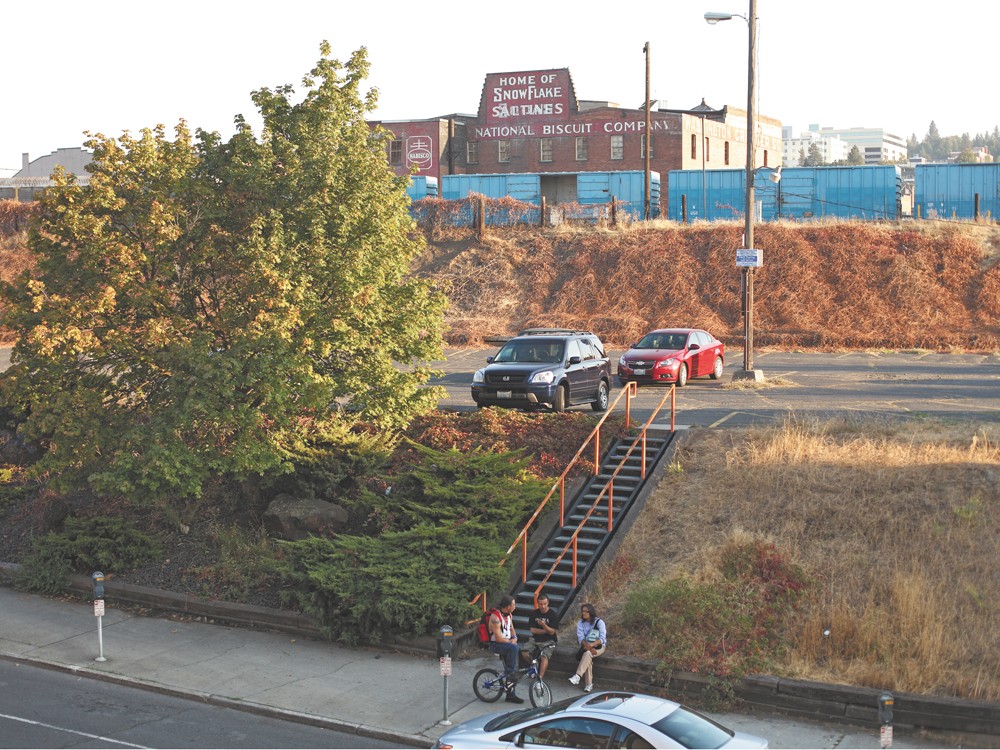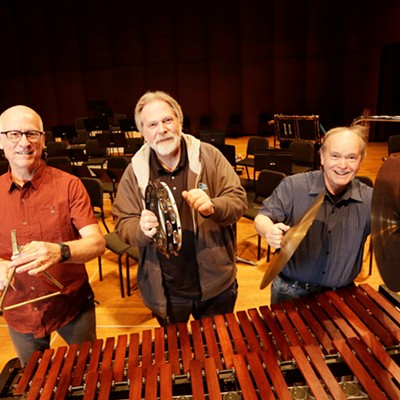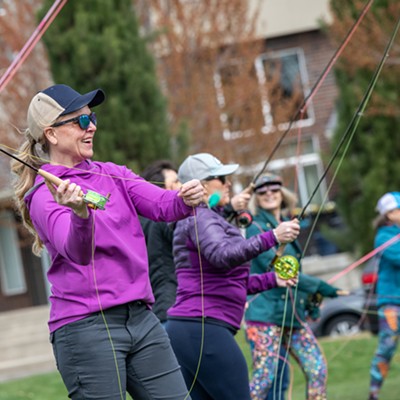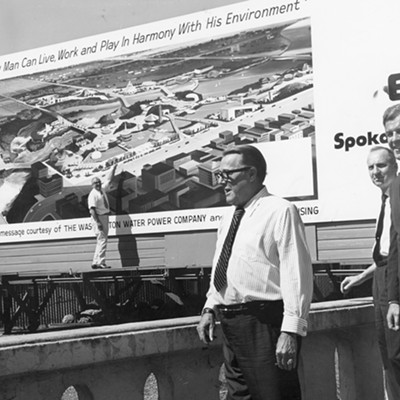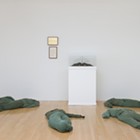One day, while walking in a city where I used to live, I passed the window of a design shop. A stencil on the window read: “We are a landscape of all that we have seen.”
If you, like me, live a quarter of your life in an office, your landscape can often seem repetitive. Day after day, you encounter the same desks, phones and cubicle cat photos. Mornings and afternoons and evenings bleed together into a canvas of phone interviews and silent, furtive computer work graced with occasional small talk.
Luckily, The Inlander’s newsroom has a series of windows that look south from the fourth floor of the Hutton Building downtown. Each office cube frames a different window, offering a glimpse of the larger, stranger world beyond. Lumbering rail cars, transients and schemers, and ordinary moments of brotherly beauty.
As I write this, the blinking lights of an Arby’s sign down on Third Avenue bubble up like uncorked champagne. The trains rumble by, carting anything from mint-green fuselages of unfinished Boeing jets, gargantuan blades of new wind turbines and loads of coal that keep modern humankind electrified and warm. All of it coming from somewhere else and leaving just as quickly.
One spring afternoon, my fellow journalists and I look out to see a man in a motorized wheelchair flying a kite up near the train tracks with the help of a friend. For me, kites have always belonged at beaches and big parks and in the hands of kids and parents. The sight of this man and his kite, so far from the usual haunts, lent downtown a strange and incongruous beauty.
Beneath the rail tracks is a parking lot where prowlers last year three times broke my car windows. We in the office have gathered to watch prowlers case the cars — one prowler usually standing lookout on the sidewalk as the other moves from car to car, peaking in the windows in search of worthy loot. More than once, we’ve yelled at them from by the fire escape to let them know we’re watching.
The parking lot itself stands 15 feet above the street level and out of view of passers-by, making attractive to the thieves but also to daytime revelers. Shirtless men will drink tallboys as they sit around the edges of the lot. The younger crowd — college-age, high school, maybe — will gather to share a joint.
Ne’er-do-wells aren’t the entire crowd. One day we watch man sitting on the steps that connect the parking lot and the sidewalk, and he’s repairing a computer. Another day, we observe a woman snapping photos of downtown as she stands beside a sleek vintage rail car emblazoned “Caritas.” The Caritas is the “America’s premier art-deco private railway car,” according to the website of the company that owns it. Built in 1948 for St. Louis-San Francisco Railroad, it now lends its bedrooms to tourists seeking the more luxurious era many wish they could have belonged to.
One Friday evening, we quit the office and head to the parking lot ourselves, having chosen it as the site of a going-away party for a departing co-worker. We play foursquare inside a chalk-drawn court, throw some rounds of Frisbee golf and shoot paper-rock-scissors, all for trophies we bought in a thrift store.
Looking up back up to our own offices that evening, at windows impenetrable with reflections of a spring sky, I wonder who, if anyone, is watching us.

